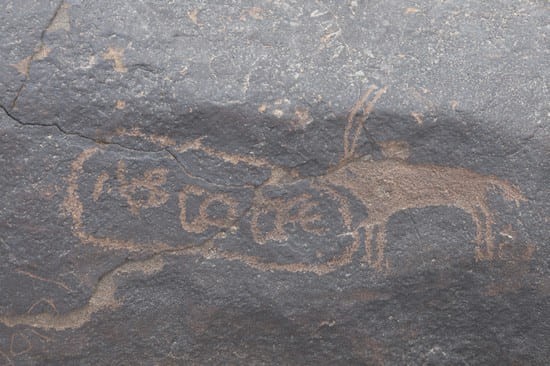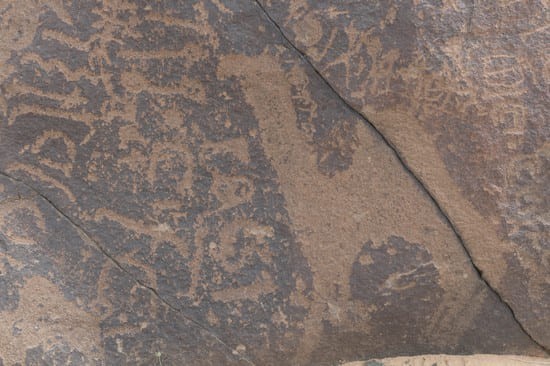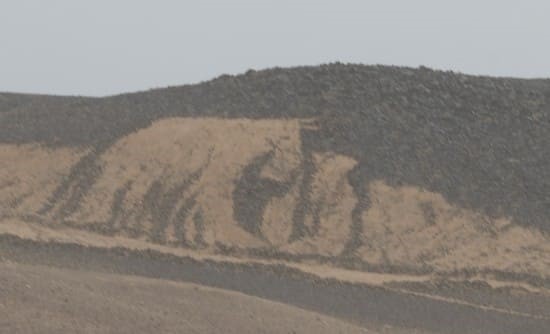Our adventure began at Al-Azraq Castle, a colossal structure
made of black basalt stone. Within its sturdy walls, stories of kings, rulers,
and sultans intertwine, reflecting the diverse architectural influences of
different eras.
اضافة اعلان
The castle's origins trace back to the Roman era, with
either Septimius Severus or Diocletian believed to have laid its foundations in
282 AD. Its strategic location near abundant springs and a major trade route
made it a desirable spot. Later, during the Umayyad era in 125 AD, Al-Walīd ibn
Yazīd and his entourage reveled in luxury within the castle's confines.
The Ayyubid dynasty erased nearly all traces of the Umayyads
and left an inscription above the sole entrance. Sultan Izz al-Din Aybak
further enhanced the castle's grandeur in 634 AD. Renowned for its
fortifications and invulnerable towers, the castle gained significance, even
earning a mention in Abu Al-Faraj Al-Isfahani's book, Kitab Al-Aghani.

Over the years, it served as a central hub for the Great
Arab Revolt, boasting stables, barracks, a mosque, storage facilities, and
supplies. Notably, during his operations in 1918, the British officer Lawrence,
known as Lawrence of Arabia, used its southern fortified tower as his
headquarters.
Accompanied by Amjad Ghanem's off-road group, we embarked on
a journey eastward, traversing vast fields adorned with olive and almond trees.
These bountiful lands were once celebrated by Gertrude Bell, the
"uncrowned Queen of the desert," during her 1905 visit to the capital
of Rashid.
After covering a distance of 30 km, we reached the starting
point of our hiking expedition to the historical Qurma Mountain.
Qurma Mountain: A record of the past
Qurma Mountain, aptly named for its resemblance to a stack
of firewood, stands as a silent witness to bygone times.

From a distance, it seems devoid of any signs of past life.
However, as we cautiously made our way through the basalt stones, an
awe-inspiring revelation awaited us at its summit. There, meticulously
preserved on the clear rock, we discovered an extensive collection of drawings
and engravings — resembling an ancient record.
Scientific studies estimate that these engravings number
around 5,000. They depict various animals that once roamed these lands,
including deer, horses, single and double-humped camels, ostriches, dogs, and
frogs.
These scenes vividly portray their lives and tools, evoking
a sense of happiness and vitality. The mountain's walls are adorned with
Thamudic and Lihyanite inscriptions, along with early Arabic lettering and
simple rock drawings, serving as a wellspring of inspiration for artists.
Notably, contemporary artist Rawan Al-Adwan showcased this
unique artistic style in her exhibitions across Jordan and Europe. Another
pioneering artist, Ali Al-Ghoul, gained recognition from art enthusiasts and
scholars for adopting this ancient art form.

These engravings have become a subject of interest in the
history of art, holding the potential to become a common topic for students of
both art and history.
In 2019, Dutch excavations led by Leiden University and the
General Antiquities Department unearthed historical tombs called
"Kirnaz", dating back 4,000 years. Media coverage shed light on the
area's rich human history, leading to its moniker, "Land of the Dead
Fire."
Meeting all the criteria for UNESCO World Heritage
protection and preservation, these ancient stones tell tales of their own.
While exploring, we encountered a pair of Montpellier snakes, mildly venomous
creatures that swiftly disappeared. Although other highly venomous creatures
may inhabit the area, we took precautions by wearing leg protectors to ensure
our safety.
Exploring Wadi Rajil: Nature's tranquil oasis
Continuing our adventure, we set our sights on Wadi Rajil,
aptly named as it descends gently from Jabal Al-Arab, carrying the blessings of
the sky from its Syrian sister towards Al-Azraq. Spanning a length of 170km,
this picturesque valley passes through Jawwa, one of the oldest fortified
cities in history, known for its legendary tales of desert life.

Nature's Bounty: Our path through Wadi Rajil unveiled an
array of unique flora, including plants like "Qaysum,"
"Sheeh," and "Harmal." These natural wonders regulate
menstrual cycles, alleviate disorders, promote lactation, and offer muscle
relaxation benefits. Chamomile, with its vibrant yellow flowers, emerged as the
ultimate remedy for nausea and diarrhea, while its oil became a popular choice
for muscle relaxation.
Our journey led us to the newly constructed Rajil Earth Dam,
which plays a crucial role in enhancing groundwater and providing water for
livestock. With a cumulative capacity exceeding 3 million cubic meters, this
expansive water reservoir serves as a vital oasis amidst the mountains. Its
presence attracts numerous migratory birds and creates a habitat for Egyptian
vultures, falcons, and other species.
As we ventured further, tantalizing aromas permeated the
air, drawing us closer to our fellow travelers from the off-road expedition
group. Amidst the bushes, smoke rose from cooking pots, enticing our appetites.
Our campsite, carefully chosen away from plants to avoid
encounters with snakes and scorpions hidden beneath stones, offered a
breathtaking view of the sunset reflecting upon the water's surface and black
stones.
The desert's whispers
As night fell, a local storyteller approached, captivating
us with desert tales and the rich history of the Bani Hilal tribe.
His words wove a mesmerizing tapestry, aided by his tone,
gestures, and the valley's history as a refuge for outlaws. Lions, once
inhabitants of the valley, were last sighted a century ago.
In the darkness, we heard the haunting howls of wolves and
the calls of the desert fox. For those observant enough, a chance encounter
with a wildcat's silhouette might grace the late night hours.
Read more Around Jordan
Jordan News




